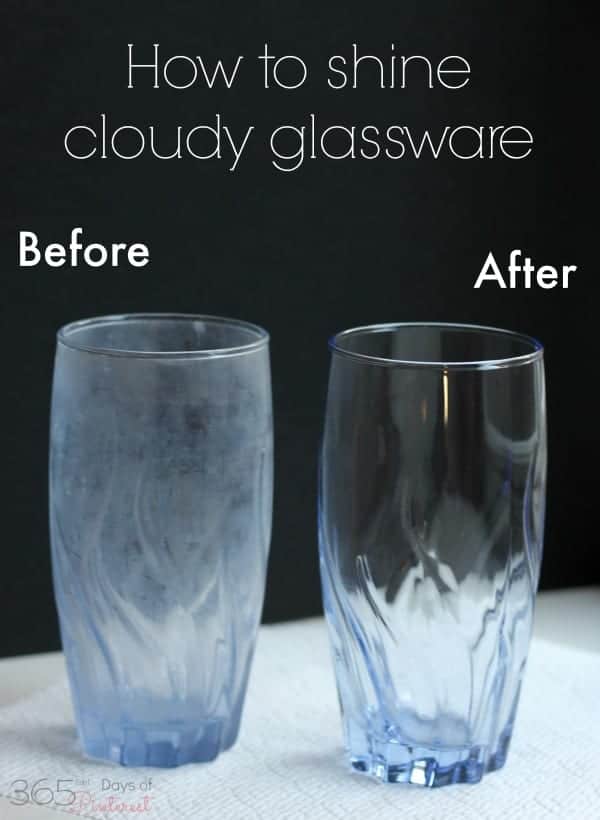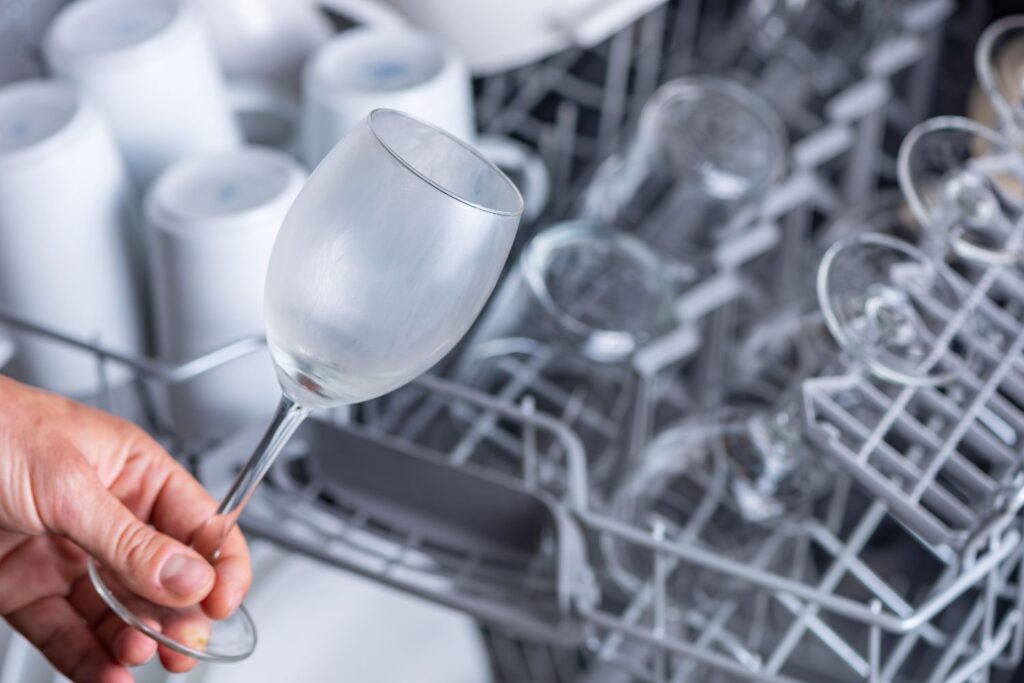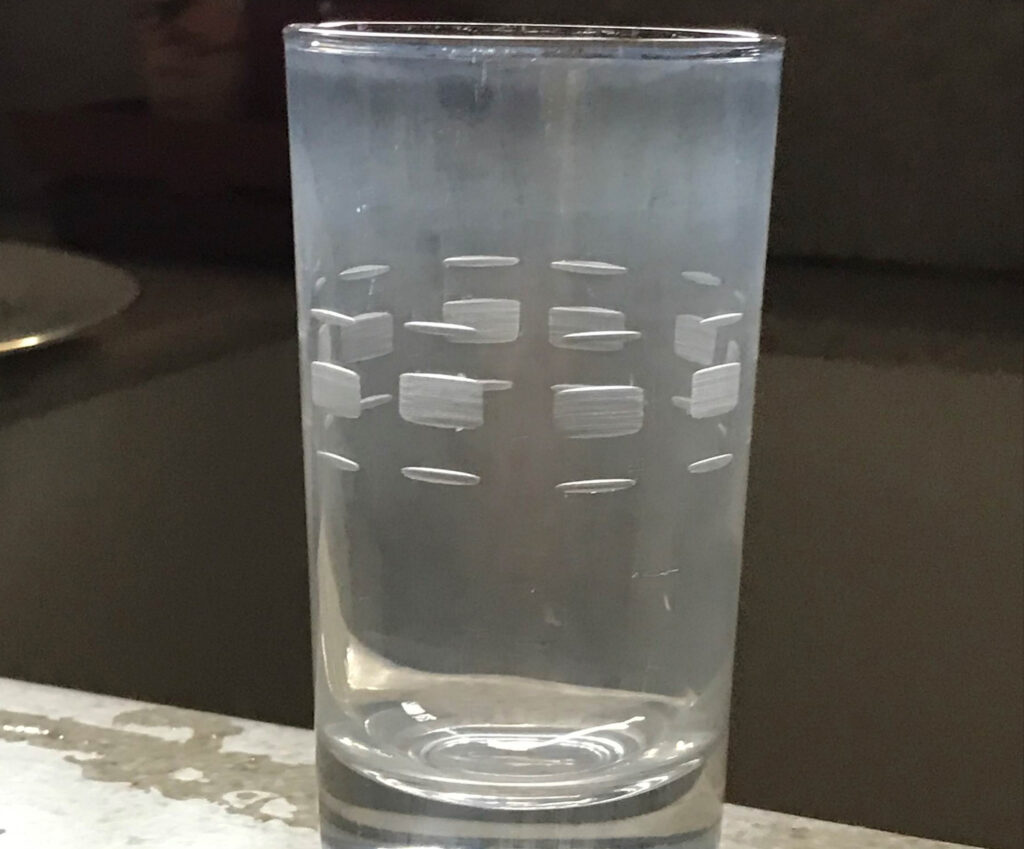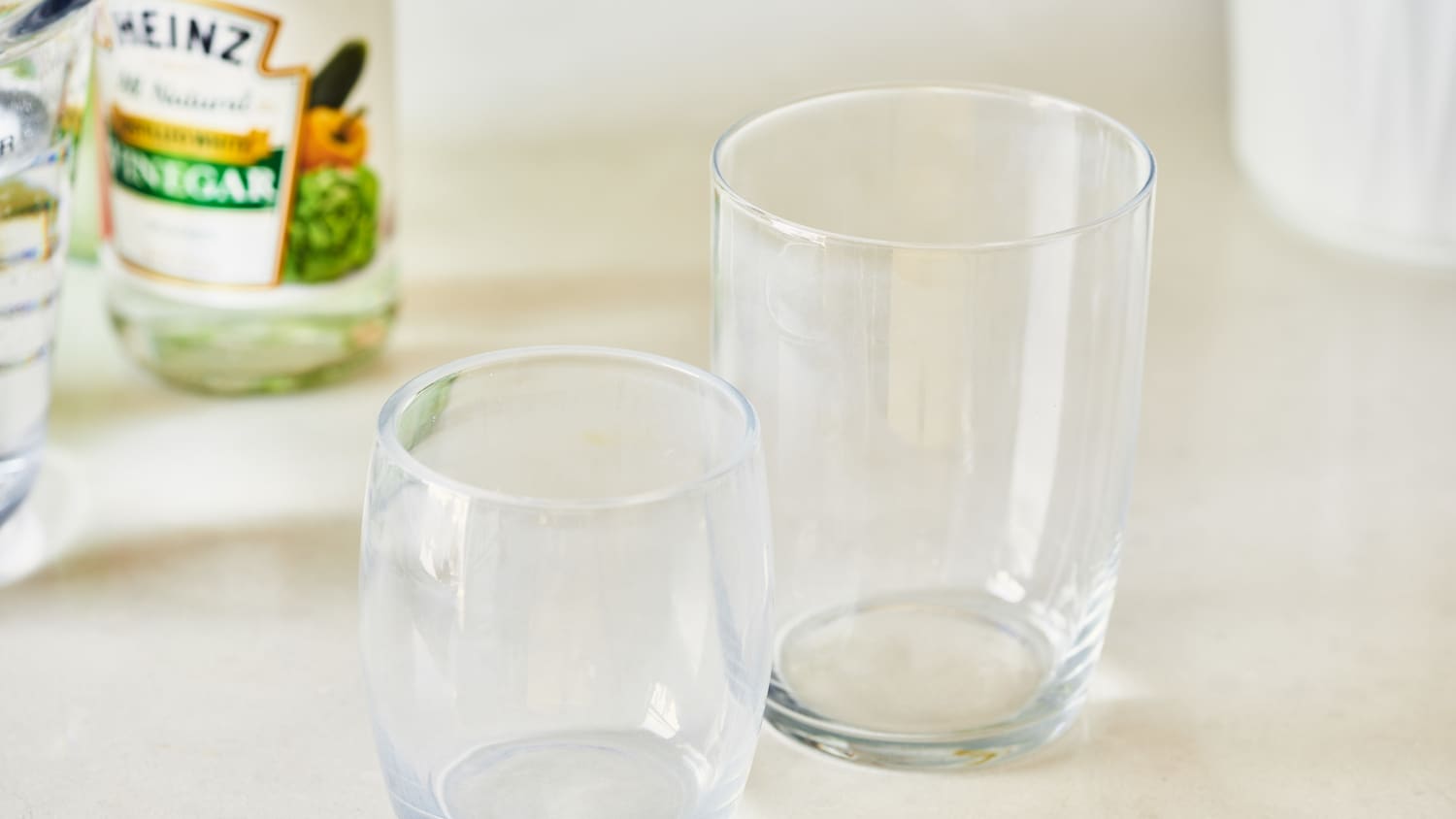
Cloudy glassware can be a frustrating issue when it comes to using your dishwasher. Thankfully, there are several effective methods that can help prevent and fix this problem. By understanding the causes of cloudy glassware, such as hard water or residue buildup, and implementing simple solutions like using vinegar or changing detergent, you can enjoy sparkling glassware with each wash. In this article, we will explore these effective methods and provide you with practical tips to keep your glassware crystal clear.

This image is property of simpleandseasonal.com.
Choosing the Right Dishwasher Detergent
Use a High-Quality Dishwasher Detergent
When it comes to choosing a dishwasher detergent, it’s important to opt for a high-quality product. High-quality detergents are specifically formulated to effectively remove food residues and stains from your dishes and glassware. Look for brands that are well-known and trusted, as they have usually undergone extensive testing to ensure their effectiveness.
High-quality dishwasher detergents often come in various forms, including powder, gel, or tablet. Each type has its own advantages, so it’s worth experimenting with different options to find the one that works best for you. Some people prefer powders because they are generally more affordable and can be easily measured for the desired amount. Others may find gels or tablets more convenient as they eliminate the need for measuring.
Opt for Detergents without Phosphates
Another important factor to consider when choosing a dishwasher detergent is the absence of phosphates. Phosphates are chemicals commonly found in a variety of household cleaning products, including dishwasher detergents. While they are effective in breaking down grease and food particles, they have been linked to water pollution and harmful algal blooms in rivers and lakes.
By opting for detergents that are phosphate-free, you can help protect the environment while still achieving sparkling clean dishes and glassware. Many brands now offer phosphate-free options, so be sure to read the labels and choose accordingly.
Avoid Detergents with Rinse Agents
Some dishwasher detergents come with built-in rinse agents, which are designed to prevent water spots and promote faster drying. While these may seem like a convenient option, they can actually contribute to cloudy glassware. Rinse agents can leave behind a residue on your glassware, resulting in a cloudy or hazy appearance.
To avoid this issue, it’s best to opt for dishwasher detergents without built-in rinse agents. Instead, you can add a separate rinse agent to your dishwasher if desired. This way, you have more control over the amount and type of rinse agent used, reducing the risk of cloudy glassware.
Ensuring Proper Loading of Glassware
Pre-rinse Glassware Before Loading
To prevent cloudy glassware, it’s important to pre-rinse your dishes and glassware before loading them into the dishwasher. This step helps remove any food residues or oils that can contribute to cloudiness. Simply give your glassware a quick rinse under running water to remove any visible debris before placing them in the dishwasher.
Load Glassware Away from Direct Contact with Dishwasher Rack
When loading your dishwasher, it’s crucial to avoid placing glassware in direct contact with the dishwasher rack. The friction between the glassware and the rack can lead to scratches or etching, which can make your glassware appear cloudy over time.
To prevent this, make sure to position your glassware securely in the dishwasher, away from any metal racks. You can use small plastic or silicone clips to hold your glassware in place and prevent any movement or contact with the rack.
Don’t Overload the Dishwasher
While it may be tempting to load your dishwasher to its maximum capacity, overcrowding can actually lead to poorer cleaning results and cloudy glassware. Overloading the dishwasher prevents the water and detergent from reaching all surfaces of your dishes and glassware effectively.
To ensure proper cleaning and prevent cloudiness, it’s best to adhere to the dishwasher’s recommended loading capacity. Leave sufficient space between items to allow water and detergent to flow freely and circulate during the wash cycle. This will help ensure that your glassware comes out sparkling and clear.

This image is property of www.thespruce.com.
Adjusting Water Temperature and Pressure
Check and Adjust Hot Water Temperature
The water temperature in your dishwasher plays a crucial role in achieving clean and clear glassware. If the water is too cold, it may not be effective in dissolving the detergent or removing food residues. On the other hand, water that is too hot can potentially damage delicate glassware or cause thermal shock.
To ensure the right water temperature, check your dishwasher’s manual for recommended settings. Most dishwashers require a water temperature of around 120 to 140 degrees Fahrenheit (49 to 60 degrees Celsius) to achieve optimal cleaning results. If needed, adjust your hot water heater’s temperature to reach this range.
Ensure Adequate Water Pressure
In addition to water temperature, water pressure is also important for proper cleaning and rinsing in your dishwasher. Insufficient water pressure can result in residues remaining on your glassware, leading to cloudiness.
To ensure adequate water pressure, check for any clogs or blockages in your dishwasher’s sprayer arms, filters, or water inlet valve. Make sure that the water supply to your dishwasher is not restricted and that the water pressure is within the recommended range. If you notice any issues, consult your dishwasher’s manual or a professional for further assistance.
Cleaning and Maintenance of Dishwasher
Regular Cleaning of Dishwasher
Keeping your dishwasher clean is essential for preventing cloudiness on your glassware. Over time, food particles, grease, and mineral deposits can build up inside your dishwasher, affecting its performance. Regular cleaning can help remove these residues and ensure that your dishwasher runs efficiently.
To clean your dishwasher, start by removing any food debris from the filter and spray arms. Use a soft brush or toothbrush to scrub away any stubborn residues. Then, wipe down the interior of the dishwasher with a mixture of warm water and mild dish soap. Pay attention to areas that may accumulate residues, such as the door gasket and detergent dispenser.
Clean the Dishwasher Filter
The dishwasher filter plays a crucial role in trapping food particles and preventing them from recirculating during the wash cycle. However, if the filter becomes clogged or dirty, it can hinder the dishwasher’s performance and contribute to cloudy glassware.
To clean the dishwasher filter, refer to your dishwasher’s manual for specific instructions. In most cases, the filter can be easily removed by twisting or lifting it out. Rinse the filter under running water to remove any trapped debris. If necessary, use a soft brush or toothbrush to gently scrub away stubborn particles. Once clean, reinstall the filter and ensure it is securely in place.
Clean the Dishwasher Spray Arms
The spray arms in your dishwasher are responsible for evenly distributing water and detergent throughout the dishwasher. Over time, mineral deposits and debris can clog the spray arm nozzles, leading to reduced water flow and ineffective cleaning.
To clean the spray arms, start by removing them from the dishwasher. Check for any visible clogs or debris and use a toothpick or small brush to remove them. Rinse the spray arms under running water to ensure they are clear of any remaining residue. Once cleaned, reinstall the spray arms securely back into the dishwasher.

This image is property of www.thespruce.com.
Using Vinegar as a Cleaning Agent
Run a Vinegar Rinse Cycle Occasionally
Vinegar is a natural cleaning agent that can help remove mineral deposits and stubborn residues from your dishwasher. Running a vinegar rinse cycle occasionally can help maintain the cleanliness and performance of your dishwasher.
To run a vinegar rinse cycle, start with an empty dishwasher. Place a cup of white vinegar on the top rack and run a normal wash cycle on a hot temperature setting. The vinegar will help break down any mineral deposits and remove any lingering odors. Once the cycle is complete, you can then wipe down the interior of the dishwasher to remove any loosened residues.
Place a Cup of Vinegar on the Top Rack
Alternatively, you can also place a cup of white vinegar on the top rack of your dishwasher during a regular wash cycle. The vinegar will mix with the water and detergent, helping to improve the cleaning performance and remove any buildup on your glassware.
Using vinegar as a cleaning agent is a natural and cost-effective method to prevent cloudiness on your glassware. However, it’s important to note that vinegar should not be used in combination with bleach or other household cleaners, as it can create harmful fumes.
Using Lemon Juice for Sparkling Glassware
Add Lemon Juice to the Dishwasher Detergent
Lemon juice is known for its natural cleaning and brightening properties. Adding a small amount of lemon juice to your dishwasher detergent can help achieve sparkling, clear glassware.
To use lemon juice, simply squeeze the juice of one lemon into your dishwasher’s detergent dispenser. Make sure to combine it with your regular dishwasher detergent, as lemon juice alone may not be sufficient for thorough cleaning. The acidity of the lemon juice will help remove stains and mineral deposits from your glassware, resulting in a pristine shine.
Place Lemon Slices in the Silverware Basket
Another way to utilize lemon juice in your dishwasher is by placing a few lemon slices in the silverware basket. As the dishwasher runs, the lemon slices will release their natural juices, infusing your glassware with a fresh lemon scent while helping to remove stains and cloudiness.
Remember to remove any lemon seeds before placing the slices in the silverware basket to avoid any clogs or damage to the dishwasher’s components. Enjoy the refreshing aroma and sparkling results that lemon juice can bring to your glassware.
This image is property of cdn.apartmenttherapy.info.
Removing Hard Water Deposits
Use a Specialized Dishwasher Additive
Hard water deposits can cause cloudiness on your glassware and are often difficult to remove. Using a specialized dishwasher additive that targets hard water deposits can help restore the clarity of your glassware.
Look for dishwasher additives specifically designed to remove hard water deposits. These additives usually contain citric acid or other effective ingredients that break down mineral buildup. Follow the manufacturer’s instructions for the recommended amount and usage, and run a regular wash cycle with the additive to remove any stubborn deposits.
Try DIY Remedies like Baking Soda or Vinegar
If you prefer a more natural approach, you can try using common household ingredients like baking soda or vinegar to tackle hard water deposits. Baking soda is a natural abrasive that can help gently scrub away mineral buildup, while vinegar’s acidity can dissolve the deposits.
To use baking soda, sprinkle a small amount onto a damp sponge or cloth and gently scrub your glassware to remove the deposits. Rinse thoroughly with water afterward.
To use vinegar, soak your glassware in a mixture of equal parts vinegar and water for several hours or overnight. Rinse the glassware thoroughly afterward to remove any vinegar odor.
Both of these DIY remedies can be effective, but they may require a bit more effort and time compared to using specialized dishwasher additives.
Avoiding Heat Damage
Choose Lower Heat or Energy-Saving Wash Cycles
High heat can potentially damage delicate glassware and lead to cloudiness or even breakage. To avoid heat damage, it’s advisable to choose lower heat or energy-saving wash cycles on your dishwasher.
Most dishwashers offer different wash cycle options, including normal, heavy, and light cycles. Opting for a lighter or energy-saving cycle reduces the exposure of your glassware to excessive heat, decreasing the risk of damage.
It’s also a good practice to ensure that your glassware is labeled as dishwasher-safe and can withstand the heat levels of your chosen wash cycle. If in doubt, refer to the manufacturer’s instructions or wash delicate glassware by hand to prevent any potential damage.
Avoid Placing Delicate Glassware in the Bottom Rack
The bottom rack of the dishwasher is typically exposed to more heat during the wash cycle. To protect delicate glassware from potential heat damage, it’s best to avoid placing them in the bottom rack.
Instead, opt for the top rack of the dishwasher to position your delicate glassware. This ensures that they are further away from direct heat sources, such as the dishwasher’s heating coil or element. By taking this simple precaution, you can help preserve the clarity and integrity of your glassware.

This image is property of arc-anglerfish-washpost-prod-washpost.s3.amazonaws.com.
Using Rinse Agents
Add a Rinse Agent to the Dishwasher
Rinse agents are additives that can be added to your dishwasher to improve the rinsing process and promote faster drying. They work by reducing the surface tension of water, allowing it to effectively flow off your glassware, preventing water spots, and contributing to clearer results.
To use a rinse agent, simply add it to the designated compartment in your dishwasher or follow the manufacturer’s instructions. Be mindful not to overfill the rinse agent compartment, as this may lead to excess residue on your glassware.
Avoid Overusing Rinse Agents
While rinse agents can be beneficial for achieving clear and spot-free glassware, it’s important to avoid overusing them. Overusing rinse agents can lead to a buildup of residue on your glassware, resulting in cloudiness and the need for additional cleaning.
Follow the manufacturer’s recommended dosage and usage instructions when using rinse agents. If you find that your glassware is consistently cloudy or has a residue after using a rinse agent, consider adjusting the dosage or switching to a different brand.
Cleaning Glassware by Hand
Wash Glassware by Hand if Cloudiness Persists
If you’ve tried various methods and your glassware still appears cloudy, it may be necessary to wash them by hand. Washing glassware by hand allows you to have more control over the cleaning process and helps ensure that no residues or cloudiness remain.
To wash glassware by hand, use a mild dishwashing liquid and warm water. Fill a clean sink or basin with soapy water and gently wash each piece of glassware using a soft sponge or cloth. Pay attention to the inner and outer surfaces, as well as any intricate designs or etchings. Rinse each piece thoroughly with clean water and place them on a clean towel to dry.
Remember to handle glassware with care to avoid breakage or damage. Washing glassware by hand can be time-consuming, but it’s worth the effort to achieve crystal-clear results.
Use a Mild Dishwashing Liquid
When washing glassware by hand, it’s important to use a mild dishwashing liquid specifically formulated for delicate items. Harsh or abrasive dishwashing liquids can potentially damage your glassware and contribute to cloudiness.
Look for dishwashing liquids that are labeled as gentle or suitable for delicate items. These formulations typically have a lower level of acidity or harsh chemicals, making them safe for use on glassware. Avoid using strong chemicals, bleach, or scrub brushes that can scratch or etch the glass surface.
In conclusion, preventing and fixing dishwasher cloudy glassware requires attention to several key factors. It starts with choosing the right dishwasher detergent, preferably one that is of high quality and free from phosphates and rinse agents. Proper loading of glassware is essential, including pre-rinsing before loading and avoiding direct contact with the dishwasher rack. Adjusting water temperature and pressure, along with regular cleaning and maintenance of the dishwasher, help ensure optimal performance. Using vinegar and lemon juice as natural cleaning agents can enhance the shine of your glassware. Removing hard water deposits, avoiding heat damage, and using rinse agents correctly are vital steps in achieving clear glassware. In case cloudiness persists, handwashing with a mild dishwashing liquid can be a final solution. With these effective methods, your glassware can maintain its clarity and sparkle, enhancing your dining experience.






